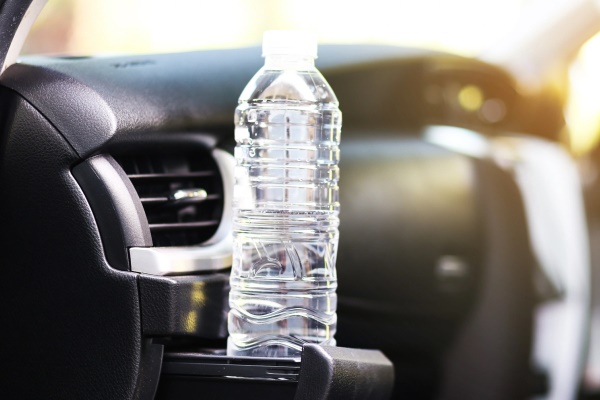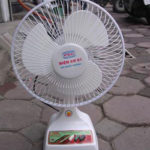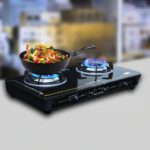According to the results of many studies and surveys, sunlight passing through water bottles, glasses, and glass spheres will act like a converging lens, focusing light and igniting the surface upon contact.

Leaving water bottles in cars during the summer can be dangerous.
In the summer, when cars have to move, especially when they are parked under the hot sun, it can cause a lot of harm, with the most dangerous being the risk of car fires due to simple objects like water bottles, glasses, and glass spheres. The reason is the round, curved, cylindrical design of these objects, which is similar to a converging lens (magnifying glass). When light shines through a water bottle, it converges at a point. The accumulated energy in the form of heat will ignite the contact surface.
A test result showed that, under the conditions of a temperature of 35 degrees Celsius, sunny weather with scattered clouds, and a time period from 12 pm to 1 pm in Ho Chi Minh City, light passing through a water bottle (smooth, 1.5 liters) can ignite a face mask inside a car as soon as it creates a converging light beam.
The test result on a non-woven fabric face mask, which is a poor heat-resistant material and easily flammable, also showed that as long as the angle of sunlight from the sun through the water bottle is appropriate and creates a converging light beam, the fabric will almost immediately catch fire.
With genuine leather material, black color, and a protective layer of plastic on the surface, the time from when it is exposed to converging light until damage occurs will be longer. Specifically, after “burning” with converging light for 20-30 minutes, the leather surface does not burn but shows signs of damage due to heat such as melted plastic and deformation.
In the world, there have been experiments where, after a sufficiently long time and angle of exposure, the leather material in cars catches fire and creates smoke.
In 2021, a video was recorded by Aut Autakorn, a mechanic in Thailand, in the afternoon when the outdoor temperature was 33 degrees Celsius. Aut saw smoke coming out from the cup holder next to the gear lever of a car that was parked in his repair shop.
At first, Aut thought that the car owner had forgotten a burning cigarette inside the car, but upon closer inspection, he discovered that the water had reflected sunlight and ignited the leather covering next to it.
In addition, health experts have repeatedly advised people not to leave water bottles inside cars, especially during hot weather, as high temperatures can make drinking water in plastic bottles become harmful.
Even when the outside temperature is only about 22 degrees Celsius, the temperature accumulated inside a car when the engine is off can reach about 40 degrees Celsius within just one hour. If a car is parked under the sun when the outside temperature is around 27-38 degrees Celsius, then the temperature inside the car can reach 55-77 degrees Celsius.
Furthermore, placing a water bottle in the middle compartment between the two front seats can lead to incidents when the car goes through bumpy roads or makes sudden stops, causing the water bottle to fall onto the floor, roll into the position of the accelerator pedal or brake pedal, posing great danger.
Therefore, when you need to bring a water bottle in the car, it is advisable to habitually place it in the side pocket of the car door, a safer position than between the two front seats, and try to replace the water bottle regularly.
Not only water bottles, but also common spherical objects and smooth surfaces placed in cars can create a converging light beam, such as glasses (especially magnifying glasses, reading glasses), crystal globes, decorative glass, etc.
Experts say that not every time sunlight passes through a water bottle or a glass sphere will it create a converging beam of light onto a certain material surface, as it depends on the angle of light projection. However, risks can still occur when cars are parked for a long time under the sun, especially with panoramic sunroofs that are not covered.
Therefore, it is advisable to avoid placing spherical objects and smooth surfaces in positions where sunlight shines on them, such as on the dashboard or the first-row seats. It is best to store them in enclosed spaces such as the glove compartment, rear door compartments, or trunk of the car.
In addition to causing fires through the converging light phenomenon, leaving beverages and food in the car and allowing them to heat up can also alter their quality and generate toxic substances. Therefore, it is recommended not to leave medications, medical creams, cosmetics, electronic devices, and flammable items such as lighters in hot cars.
Source: VTC



































